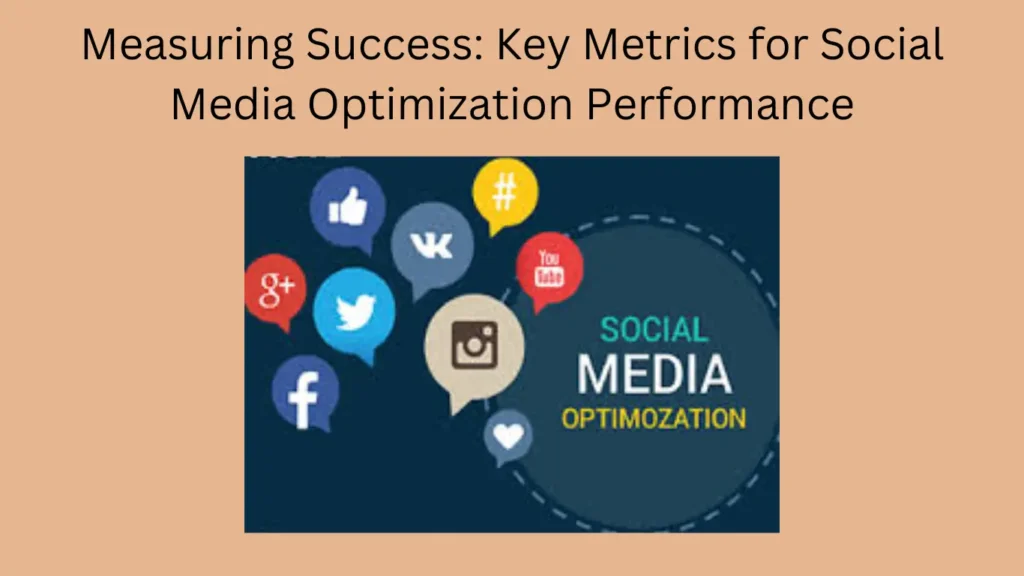Introduction
To determine the effectiveness of your social media optimization (SMO) efforts, it’s crucial to measure success through key metrics. These metrics provide insights into how well your strategies are performing and where improvements can be made. This guide outlines the essential metrics to track and how to use them to assess and improve your SMO performance.
Understanding Social Media Metrics
Social media metrics are quantitative measures that help you evaluate the performance of your social media activities. They offer insights into user behavior, content effectiveness, and overall engagement with your brand. Key metrics include engagement rates, reach, conversions, and more. Understanding these metrics enables you to refine your strategies and drive better results.
Key Metrics to Track
1. Engagement Rate
Definition: Engagement rate measures the level of interaction your content receives relative to the number of followers or impressions.
Why It Matters: High engagement rates indicate that your content resonates with your audience and encourages them to take action.
How to Measure
- Engagement Rate = (Total Engagements / Total Impressions) × 100
- Track this metric on individual posts and overall profiles to assess content performance.
Actionable Tip: Analyze which types of content generate the highest engagement and tailor your future posts accordingly.
2. Reach and Impressions
Definition: Reach refers to the number of unique users who see your content, while impressions count the total number of times your content is displayed, including multiple views by the same user.
Why It Matters: Reach helps you understand the size of your audience, while impressions show how often your content is seen. Both metrics are important for assessing visibility and awareness.
How to Measure
- Reach and Impressions are typically available through social media analytics tools and platform insights.
Actionable Tip: Use reach and impressions data to gauge the effectiveness of your content distribution and to adjust your targeting strategies.
3. Click-Through Rate (CTR)
Definition: CTR measures the percentage of users who click on a link in your post relative to the number of total impressions.
Why It Matters: A high CTR indicates that your content is compelling and prompts users to take action, such as visiting your website or landing page.
Actionable Tip: Optimize your calls-to-action and link placements to increase CTR.
4. Conversion Rate
Definition: Conversion rate measures the percentage of users who complete a desired action, such as making a purchase or signing up for a newsletter, after interacting with your content.
Why It Matters: It’s a direct measure of how effectively your social media efforts drive business goals, such as sales or lead generation.
Actionable Tip: Analyze the customer journey from social media interactions to conversions. Adjust your strategies to improve the conversion path and optimize content for driving actions.
5. Follower Growth
Why It Matters: A growing follower base indicates that your content and engagement strategies are attracting new users and expanding your reach.
How to Measure
- Monitor follower counts using social media analytics tools and track growth trends over time.
Actionable Tip: Identify the factors contributing to follower growth and replicate successful tactics. Regularly review your follower acquisition strategies to maintain growth.
Conclusion
Measuring the success of your social media optimization efforts requires a focus on key metrics that reflect engagement, visibility, and business outcomes. By tracking and analyzing these metrics, you can gain valuable insights into the effectiveness of your strategies, make data-driven decisions, and continually enhance your social media performance. Implement these practices to ensure your social media efforts drive meaningful results and contribute to your overall marketing objectives.
For further Inquires Contact Us
FAQs
What are social media metrics and why are they important?
Social media metrics are quantitative measures that help you evaluate the performance of your social media activities. They are crucial for understanding how well your content performs, guiding strategy adjustments, and achieving marketing goals.
How do I calculate engagement rate on social media?
Engagement Rate = (Total Engagements / Total Impressions) × 100. This metric shows the level of interaction your content receives relative to its visibility, helping gauge its effectiveness.
What is the difference between reach and impressions?
Reach is the number of unique users who see your content, while impressions count the total number of times your content is displayed, including multiple views by the same user. Both metrics help measure visibility and awareness.
How can I improve my click-through rate (CTR)?
To improve CTR, create compelling calls-to-action, optimize link placements, and ensure your content aligns with your audience’s interests. Regularly test different approaches to see what works best.
What is sentiment analysis and how does it benefit my brand?
Sentiment analysis evaluates the emotional tone of user interactions, categorizing them as positive, negative, or neutral. It helps understand public perception of your brand and guides content and communication strategies.

